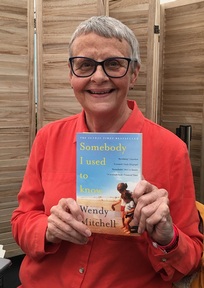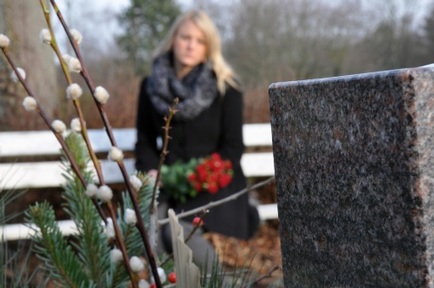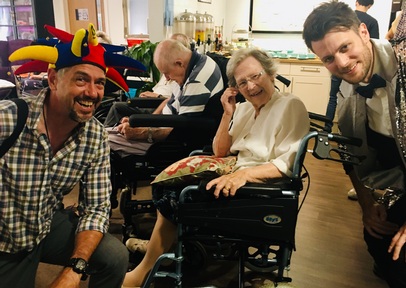Easy for CQC inspectors to 'get the wrong end of the stick' says lawyer
It’s a comment Mei-Ling Huang from law firm Quality Solicitors Burroughs Day, says she doesn’t make lightly. She’s trawled through enough CQC inspection draft reports and evidence from care homes to recognise the care watchdog is not infallible. 
Ms Huang explains: “If for example inspectors just shut themselves away in the [home’s] office and don’t ask for things, then they won’t see all the pieces of evidence. They’ll jump to conclusions which are not necessarily correct.”
As a partner of the law firm’s health and social care team, Mei-Ling Huang’s job includes challenging inspection reports. Her work with care homes with ‘Requires Improvement’ and ‘Inadequate’ ratings take up much of her time. But she also has “providers who are rated as ‘Good’ who really feel they should be ‘Outstanding’".
“They can’t quite understand what the problem is there, why they can't get that [Outstanding] recognition from the CQC.”
Under a new system of CQC inspections, as of 31 July 2016, 73 per cent of care homes and 58 per cent of nursing homes are rated ‘Good’ but only one per cent (of residential and nursing homes) are ‘Outstanding’. If a care home wants to challenge the results of an inspection, Ms Huang has this advice for what care homes should do.
Get your documentation in order
Before giving a rating, the CQC uses intelligent monitoring, pre-inspection information gathering, on-site inspection and speaks with residents, their families, carers and staff. CQC inspectors use a set of key lines of enquiry (KLOEs) to guide inspections which relate to five questions asked of services – are they safe, effective, caring, responsive and well-led?
Care homes are urged to prepare an evidence file to show inspectors based on the five questions and KLOEs. This includes the best evidence a care home has to show areas where it is ‘Outstanding’ including work that is really “innovative and really effective.”

Mrs Huang says “Inspectors go in who may never have seen the place before. They have a day or two to go through everything and do quite a comprehensive inspection and don’t know where anything is.
“Everyone does the documentation slightly differently. It’s quite easy I think, getting the wrong end of the stick. So, we have to make sure the inspection report is accurate because a lot of times they do have mistakes in them.”
Using the example of whether or not training was done, she says: “The service may have all the training certificates but they haven’t transferred them onto the [computer’s] training matrix yet, so the matrix isn’t up to date. They may assume the training wasn’t done. The evidence may be somewhere else and they haven’t seen that bit of paper.” Ms Huang recommends providers be “as helpful as possible” by being present to give inspectors what they need “to draw the correct conclusions rather than leaving them to it.”
Prepare staff for inspection day
Managers and owners may know all there is to about CQC, how they will inspect, the questions they will ask and evidence they want to see, “but if your staff don’t then the chances of the inspection being successful are greatly reduced,” says Ms Huang.
She emphasises talking to staff about inspection reports and what inspectors may ask them about staffing levels, training, whether they feel supported, the Mental Capacity Act, DoLS safeguarding etc.
“You need to train the staff and get them talking about those things, so they can express it. A lot of doing well is about being able to articulate things in a way an inspector can understand.”
When an inspector calls
Helping inspectors get the full story is important. The lawyer says inspectors and even ‘experts by experience’ won’t know the background of the person they are talking to. “They may not know how severe a resident’s dementia is and don’t know whether what the resident is telling them is something from the past, the current day or their own reality. There are issues with people with dementia saying things have been stolen from them.”
She advises care providers take an inventory of items brought into care home by a resident when they moved in, to identify whether the item was ever brought into the home.
“Inspectors have to take everything at face value but it’s not necessarily the truth.”
Fact check draft reports and challenge with evidence
Once a draft inspection report is sent to the care home, providers can challenge the accuracy and completeness of the evidence on which the ratings are based. Ms Huang says any inaccuracies the CQC accepts, could lead to a change to one or more ratings and possibly a change to an overall rating.
With inspections rated according to five areas (are they safe, effective, caring, well-led and responsive), the lawyer believes care homes near a ‘Good’ rating (e.g: three out of five areas are ‘Good’ and two ‘Requires Improvement’), could potentially convert a ‘Requires Improvement’ overall rating to ‘Good’. By examining the Requires Improvement area in the draft report and getting inaccuracies changed, Ms Huang says it is possible to upgrade at least one of the ‘Requires Improvement’ ratings.
Similarly, the lawyer says, care homes which are ‘Good’ but feel strongly that they should be ‘Outstanding’ (e.g. three Outstandings, two Goods) can follow the same process.
But she warns: “You’ve got to have the evidence.”
Providers have 10 working days to review draft reports for accuracy and submit a factual accuracy log to the CQC, before the final report is published. Once published, providers can ask for a review of ratings but the grounds for requesting this are that the inspector did not follow the process for making ratings decisions.
18 rating upgrades in adult social care since 2014
When carehome.co.uk asked the CQC how many reports had been challenged in the last two years resulting in an upgrade to a higher rating, the CQC said between 1 October 2014 and 4 November 2016 – there had been 18 rating increases to one of the five areas (safe, caring, effective, responsive and well led). The 18 upgrades were made for all adult social care services including community-based and hospices - that’s 18 upgrades out of 19,441 active adult social care reports with ratings since October 2014.
What if you submit evidence and it is ignored?
The care regulator’s inspection process was in the spotlight last Summer for ignoring evidence. A High Court judge hearing a case against the CQC, looked at the care watchdog’s refusal to correct factual inaccuracies in an inspection report for ‘Inadequate’ GP practices. The judicial review claim was brought by SSP Health, which had three GP practices put in special measures in 2015 after the CQC found services ‘Inadequate’. Judge Mrs Justice Andrews said in a High Court ruling on 12 August that the CQC was 'not entitled to refuse…a reasonable request for it to review or reconsider its responses to the claimant’s factual accuracy comments and then to re-evaluate the ratings in the light of any corrections'.
Andrea Sutcliffe, the CQC’s Chief Inspector of Adult Social Care said: “I do have confidence in our inspectors. But like any good employer, we also have other checks in place. Our inspectors do not work and pass judgment in isolation. They now more regularly work in teams, they follow clearly set out KLOEs to guide their inspections.”
When asked what improvements the care watchdog plans to make to avoid mistakes in reports, Ms Sutcliffe said: “There will always be improvements that we can make, but I am confident that CQC is making significant progress to becoming the strong regulator the adult social care sector needs.”
Referring to the small percentage (one per cent) of care homes rated Outstanding, Ms Sutcliffe said: “I make no apology for setting a high standard for Outstanding services to reach. It is not an impossible standard and if services are worthy of being rated as Outstanding, my inspectors will certainly write a report to demonstrate that. Providers should be proud of their Good ratings too.”
Latest Features News
 25-Nov-19
2019 Election: Boris Johnson leaves social care in 'too difficult box' but Labour vows to end 'crisis'
25-Nov-19
2019 Election: Boris Johnson leaves social care in 'too difficult box' but Labour vows to end 'crisis'
 18-Oct-19
Podcast: Wendy Mitchell and dementia: 'My biggest fear is not knowing who my daughters are'
18-Oct-19
Podcast: Wendy Mitchell and dementia: 'My biggest fear is not knowing who my daughters are'
 27-Sep-19
Exclusive: Care minister backs care workers' call for time off to grieve and attend funerals
27-Sep-19
Exclusive: Care minister backs care workers' call for time off to grieve and attend funerals
 19-Sep-19
Podcast: Gyles Brandreth says poetry helps ward off dementia
19-Sep-19
Podcast: Gyles Brandreth says poetry helps ward off dementia
 30-Aug-19
Edinburgh Fringe funnyman joins comics facing toughest audience at care home gig
30-Aug-19
Edinburgh Fringe funnyman joins comics facing toughest audience at care home gig